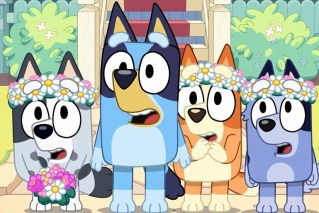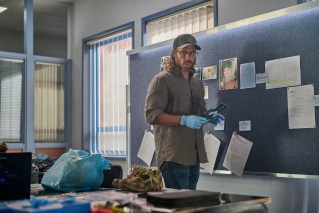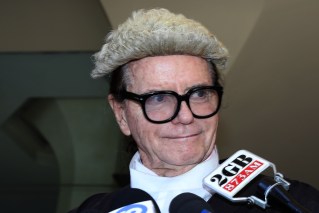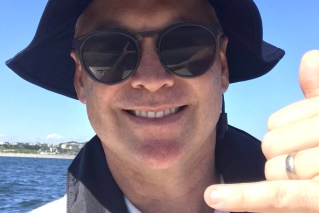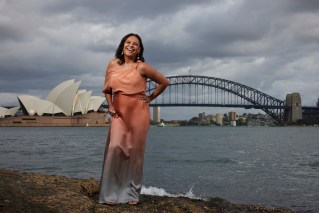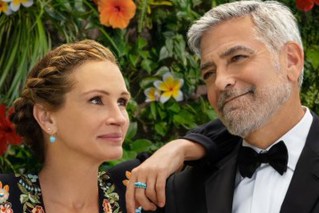Analogue TV moments: Death and funeral of Diana

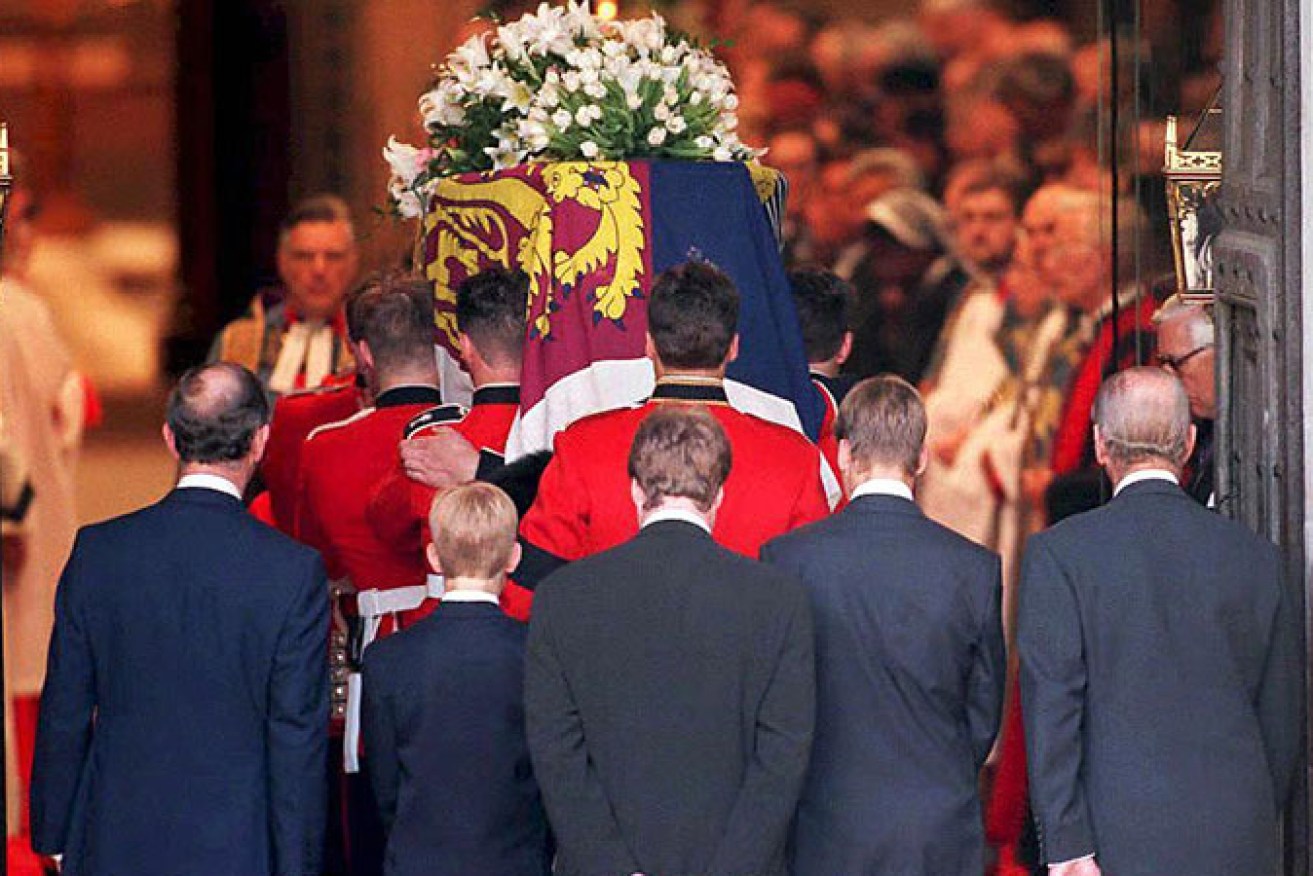
Princess Diana's coffin is carried into Westminster Abbey. Photo: Getty
The Death and Funeral of Diana The Princess of Wales (September 6, 1997)
In the dance of time, the music occasionally stops and we stare dumbly in the silence asking, “Why?”.
I remember precisely where I was when the announcer solemnly delivered the news that at 4am Paris time, Diana Princess of Wales was pronounced dead.
My wife, who years before as a student, with her best friend Danni, pretended to be a waitress so she could attend an official function with Diana and who then broke all protocol and land speed records to offer the newly wed Princess a salmon petit four before security moved in, and who forever after remembered Diana’s flawless skin and laughing blue eyes, cried as though she had lost a friend.
She had. We all had. Although few of us had met her, or even caught a glimpse of her in real life, petit fours in hand or otherwise, we felt as though we knew Diana and had all shared in her glorious, tragic, trajectory. Such was the power of her story.

The wreckage of Princess Diana’s car in the Alma Tunnel, Paris.
Even before we had drawn breathe, television stations began running hastily cobbled together packages and biographies recounting in ever increasing filmic minutae the extraordinary life of “the unique, the complex, the irreplaceable” Diana.
I am no Royalist. But like all of us, I was stunned. Like all of us, in the hours and days that followed, I struggled to make sense what had happened and why her loss cut so deeply.
The answer was in front of us; in our living rooms on our television screens.
Remember the images? The shy, round shouldered ingenue slinking along the paparazzi packed pavements of Sloan Square? The virginal kindergarten teacher cuddling a toddler in that famous backlit see-through skirt?
We had seen Diana blossom from the virtuous fairytale bride, at 20 a mere child, through her first tentative steps towards womanhood and then to motherhood. In Australia we had waltzed with her. Then through her quest for perfection and battle with eating disorders, through the failure of her marriage and Dianagate and the loss of her Title, all of it we had shared.
We had seen her pick up the pieces and dedicate herself to her children, the young Princes, and to political issues, such as her commitment to the outlawing of landmines. Remember the footage of her sitting with a man dying of AIDS? And we had seen the emptying of her designer wardrobe to give her charities money and herself a fresh start. We did not begrudge her quest for renewed happiness, nor even her dalliance with Dodi Fayed.
Every second of it we had consumed.
At 4am Paris time, the music stopped. We stared in silence. This was not how Diana’s story was supposed to end. A friend had been taken. A fairy tale had been cut short. She had both courted and fled the media. Her image had been both her fame and her captor. Now at 4am Paris time, her untimely death made it ever so.
In the days that followed it was only Diana.
The aircraft of the Queens Flight flies her home. Tony Blair stands beside an Honour Guard. The Prince Of Wales, who has accompanied the body from France, steps from the plane. The coffin is solemnly borne from the aircraft draped in a Royal standard edged in ermine, an honour usually reserved for Royalty.
Says Tony Blair: “She was the people’s princess. And that’s how she will remain in our hearts and memories. Forever.”
The People’s Princess. The images are clear. But it’s hard to comprehend what we are seeing.

Prince Charles (right) and his sons, Prince William (left) and Prince Harry, at the funeral of Princess Diana.
Who can forget the flowers, piled knee high, flooding the gates of Kensington Palace? High above, the Royal Standard is limply unfurled at half mast.
Who can forget the image of the poor children, Prince William and Prince Harry, dressed in ill-fitting suits, picking their way through the flowers, reading cards. Remembering.
Who can forget the Queen as she appears in her belated broadcast, dressed in black dress with pearls, “She was an exceptional and gifted human being. She never lost her capacity to laugh and to inspire others.”
Then finally, Diana’s Funeral.
Unavoidably the funeral of Diana, Princess of Wales falls on the day of my wife’s brother’s wedding. Who could have known?
Peter and Libby’s wedding is a beauty; but the spectre of Princess Di haunts the festivities like an uninvited former girlfriend. Even back at the restaurant where the wedding reception is held, Diana is with us as the guests crane to glimpse the TV monitor in the next room or crowd the bar to see the progress of the televised funeral service.
• Introduction: The 57 greatest moments in 57 years of analogue TV
• Man walks on the moon
• Colour television introduced
• The America’s Cup
• September 11 terrorist attacks
From my table inside the wedding reception I see Richard Branson, Sting, David Attenborough, Steven Spielberg, George Michael, Pavarotti and Hilary Clinton.
The parks and streets of London overflow with flowers and grief.
As the gun carriage bears Diana’s coffin, draped in the Royal standard and festooned with lilies, there follow the men in her life; Prince Philip, Prince Charles, her two sons and her brother the Earl Spencer.
London is silent. You can hear the crunch of polished military boots on gravel as the red coated officers bear her into the mouth of the cavernous Westminster Abbey. Within, there are hymns and salutes. Yet it is Diana’s brother, the devastated Earl Spencer, who speaks for his missing sister.
“She was looking for a new direction … A girl given the name of the ancient goddess of hunting was in the end the most hunted woman of the modern age.”

Princess Diana’s coffin is carried into Westminster Abbey.
Even as the Earl condemns the predatory media, the cameras inside the Cathedral hunt and zoom. And there amongst the flowers atop the coffin we see a small handwritten envelope. A child’s awkward best writing.
“Mummy.”
For all the ceremony and celebrity, the heart-moving tragedy of this life cut short is most gut-wrenchingly observed in the tiniest of impromptu human outpourings.
“Mummy.”
Back at our wedding reception, flower girls chase each other and a toddler hides under the table and the room echoes with laughter and wedding toasts, but from the television screen in the nearby bar the funeral marches onto the streets.
If the Abbey is the farewell of Princes and potentates, the streets are the peoples farewell.
It is a perfect London day; the perfect day for tennis or a wedding. Not the day for this.
The cortege snakes its way through the streets before hundreds of thousands of mourners. There is a blurring of where the crowds end and the television viewing audience begins but it is of little consequence; we are all bound together in a shared outpouring. We are all united in grief. The boundaries are unclear but the emotions are undiluted.
Freeways are cleared and the procession flanked by motorcycles heads North on the Motorway, 50 miles distant to her childhood home. We track the progress of the hearse as it meanders through the English country side to that sad and solemn resting place.
The hearse turns into the black iron gates of her family estate, Althorpe, past small children and grown men wearing T shirts, “The Queen of Hearts.”
And she is gone.
A global audience of over 2.5 billion people watched Diana’s funeral on television. The woman who had been hunted by the media was now honoured by it. She knew better than anyone the paradox of the global medium: television connects the global masses by focusing on the most utterly personal.
“Mummy.”
Diana had spent her adult life duelling with the beast of the media. She had by turn, both run from and courted the leering omnipresent cameras. She had occupied much of her life seeking to manipulate the media. Tragically, only in death had she tamed the beast.
Diana, whose short life had been haunted by her desperate search to be loved, finally in death was beloved by all.

